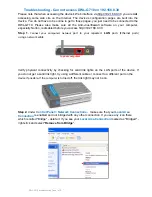
HP 85027A/B/C Service
Signal Path Check
1.
Check the output of the buffer amp at U6 pin 6. The voltage should be the same
as that measured in step 3 of the microcircuit check. It may be offset.
2.
Check the output of Ui pin 14 with the gain potentiometer (R5) centered. The
voltage should be approximately O.44Vrms.
Clock/Control Check
1.
With the HP 85027 configuration switch set at [HP8756/HP8755], verify that
there is no squarewave output at U2 pins 1, 2 and 4.
2.
Set the HP 85027 configuration switch to the [HP8757] position.
3.
Configure the HP 8757A for DC mode.
4.
Verify a squarewave output of 27.778 kHz at UI pin 14.
5.
If U! pin 14 does not have a squarewave output, check for a squarewave of
27.778 kHz at U! pins 2 and 3, also U2 pins 1 and 2; 55.555 kHz at U! pin 9, also
U2 pin 4.
CONNECTOR INSPECTION
Periodically inspect the connectors visually and mechanically. A bad connector can
damage a good connector on the first connection. The effort and expense of replacing
bridges with damaged connectors can be lessened by using good connectors. If a
connector fails the visual or mechanical inspection or, in use doesn’t feel right, don’t use
it.
Visual Inspection
Inspect connectors with an illuminated, 4-power magnifying glass. The lighting is
crucial, the exact power is not. Normal room lighting, especially oblique desk lamp
lighting, casts shadows. The shadows can mask the small defects you are trying to
expose. Magnifying glasses with integral lighting provide shadowless, axial illumination.
They are readily available from general equipment suppliers. Get one and use it.
Examine connectors for obvious problems such as deformed or clogged threads,
contamination or corrosion. Concentrate on the contact surfaces. Look for burrs,
scratches, rounded shoulders or other signs of wear or damage. Defects which you can
see with the magnifying glass can degrade performance. Replace defective connectors.
If a connector is dirty, clean it. Work static free. Refer to Figure 8-3 for cleaning
suggestions. Note that those suggestions apply equally to 3.5mm and Type-N connectors.
Try blowing off the dirt with compressed air first. Brush or wipe any remaining dirt
from the surface carefully. Use trichlorotrifluoroethane (liquid Freon) sparingly as a
cleaning solvent if need be. Do not use abrasives or other solvents which could damage
the thin metal plating or the plastic dielectric supporting element.
8-7












































